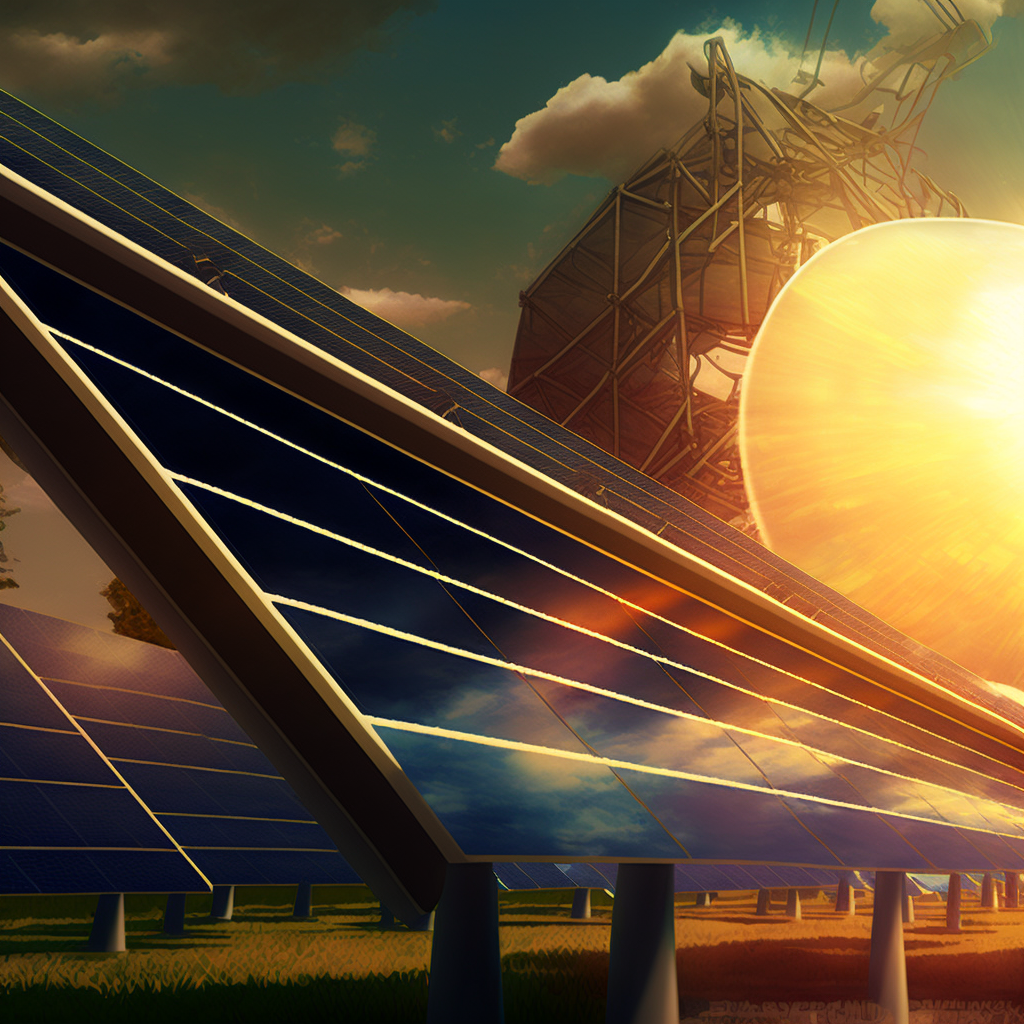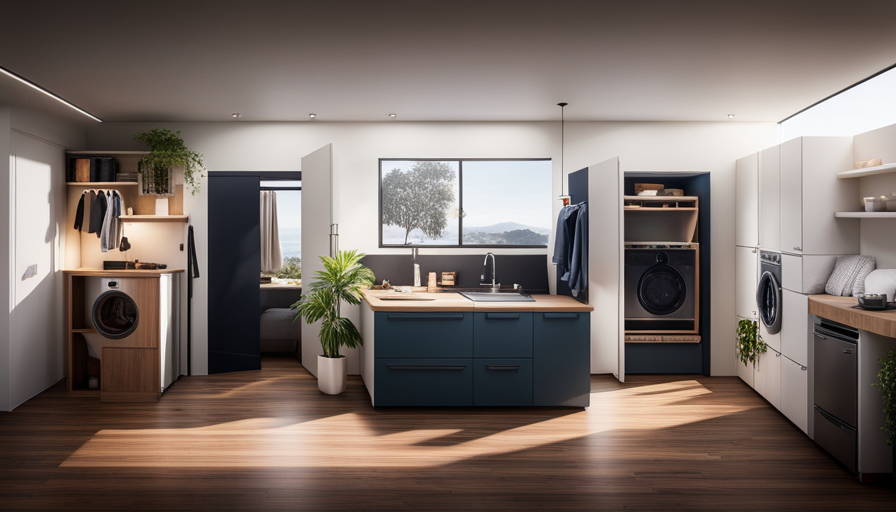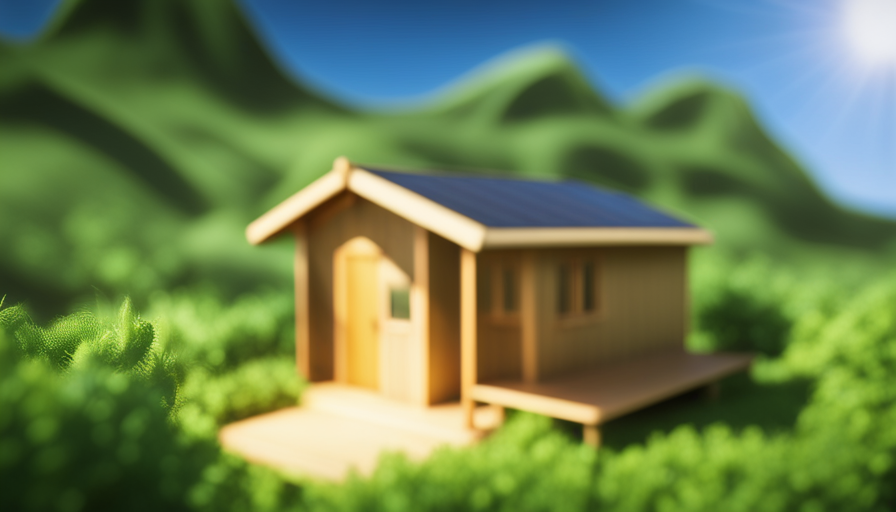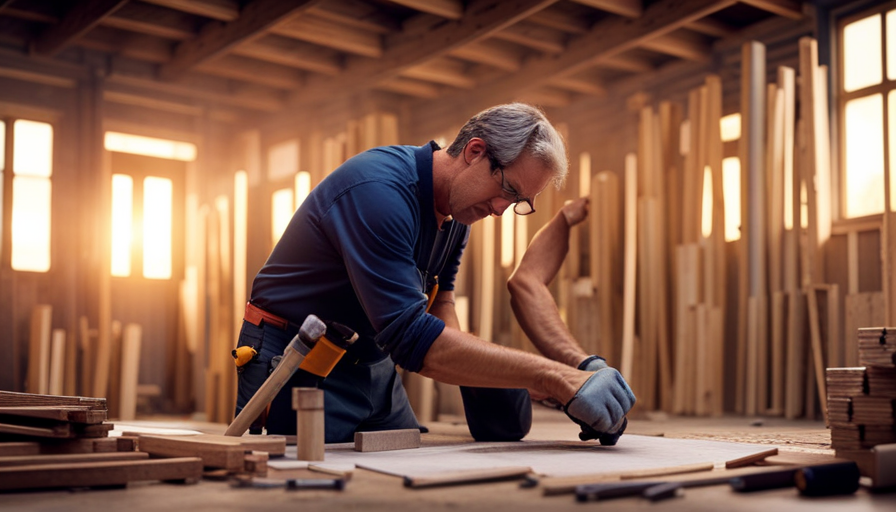Solar Panel Installation and Maintenance
Should Solar Panels Be Angled?

Before making the decision to mount solar panels on your roof, it’s important to take into account several considerations. These considerations encompass the expense, seasonal changes, geographical latitude, and the overall cost. For the winter season, angling the panels five degrees more than the Equatorial tilt is advisable. During the summer period, a somewhat more level angle is beneficial.
Latitude is a key factor in determining the optimal angle of a solar panel.
Solar panels should be angled according to your latitude in order to maximize the solar energy produced. The optimum angle depends on the sun’s movement during the day, which is different in winter and summer. To find the optimal angle, multiply your latitude by 0.9 and subtract 29 degrees during winter. An online calculator can be used to calculate the best angle for your solar panel.
If you are located in the northern hemisphere the optimal angle for solar panels would be towards south, magnetic or true. The optimal azimuth angle is approximately 20° from magnetic south. Depending on your latitude, you can leave one angle alone or adjust it several times a year to maximize solar exposure.
The optimal solar panel angle depends on your latitude and climate. A higher angle will allow the solar panel to absorb more sunlight and produce more energy. In a high latitude, a higher angle will produce better results during winter than during the summer. But this depends on a few factors, such as temperature.
Solar panel angle is determined by the sun’s path across sky. The sun is directly overhead above the equator. The angle will decrease the closer you are to the equator. It is important to remember that solar panel angles must be adjusted to account for this seasonality. For instance, if you live in an area with fog in the morning, you may want to angle your solar panel to maximize production during late afternoon.
Your latitude is another important factor that can affect the angle of your solar panel. Since the position of the sun changes throughout the year, it is important to keep in mind your latitude before installing a solar panel. For example, 40 degrees latitude will see the sun higher in summer than winter. During these seasons, solar panels should be tilted at an angle of 15 degrees in order to maximize the amount of solar energy they can receive.
Whether you want to install solar panels or not, you will need to understand that a solar panel’s tilt angle is a key factor in solar panel performance. The panel will produce the most energy if it is tilted at the maximum amount of sunlight. The ideal angle depends on your latitude.
If you want to install solar panels on your roof, you need to make sure they are angled at the right latitude. The best angle is one that is closest to your home’s latitude. In general, the angle should be between 30 and 45 degrees. However, this angle will vary slightly over the year. In summer, the solar panel angle should be 15 degrees lower than the latitude and 15 degrees higher than latitude in winter.
Your latitude is another factor that affects solar panel angle. Higher latitudes have higher sun angles and thus need a higher tilt angle than the lower latitudes.
Optimal tilt angle depends on season
The optimal tilt angle for solar panels depends on the season and where it is located. The winter tilt angle should not be higher than the summer. For example, if you live in Florida, you should tilt your panels at 45 degrees during the winter, and at 55 degrees during the summer.
To maximize energy production, optimal solar panel tilt angles must be achieved. The summer sun is higher than the winter sun, so the optimal tilt angle depends on the latitude of your location. A solar panel installed at a 40 degree latitude will generate a significant amount of energy year-round. Using the following formulas, you can determine the optimal solar panel tilt angle.
The optimal solar panel tilt angles can vary widely, but generally a steep angle between 60 and 45 degrees is best for winter production. Spring production requires a low angle of 20 degrees, while spring production requires a steep angle between 20 and 45 degrees. Summer production requires a steep angle between 45 and 60 degrees. The ideal solar panel tilt angle for northern climates varies depending on where you are located.
The solar panel’s latitude and the tilt angle will determine the optimal tilt angle. In the winter, snow and ice can accumulate on the panel and reduce its production. An angle higher will reduce accumulation. Similarly, it will limit soiling of the panel. Consequently, it will enhance your energy conversion.
The optimal tilt angle for March is 31 degrees. In December, it is 30 degrees. This angle yields an average of 4.33 kWh of energy per month. The optimal tilt angle in summer is smaller than it is in winter, but this matches real data.
The best time for solar panel installation is between 10am and 11am. It is between 8 and 9pm in winter. It depends on the season. You can calculate the optimal angle using a ruler, or a solar calculator online. Also, consider the time of day and the declination of sun. This will give you a good idea of when to tilt the panels.
Another factor that affects the optimal tilt angle for solar panels is the latitude of the property. The sun shines less in the south than the north, and northern regions get more sunlight. The optimal tilt angle will maximise the sunlight collected by the solar panels, and increase the energy produced.
The best tilt angle for solar panels depends on the season and where it is located. Solar panels should be oriented at least 10 degrees in a sunny location to maximize energy production. However, this angle should not be too high or too low, as this can cause the solar cells to burn out and become inefficient.
Solar panels are best placed facing south. Ideally, solar panels should face southward, as this will provide the most direct sunlight to them. If they face northward, they should be oriented at 30 degrees. If they are facing southward, they should be oriented at 32 or 33 degrees.
Optimal tilt angle depends on cost
When determining the optimal tilt angle for solar panels, you must consider the latitude of the installation site and the time of the year. It is important to understand the impact of these factors in order to get the best output from your PV modules. Here are some suggestions to help you determine the optimal tilt angle for your solar panel installation. However, remember that there is no one-size-fits-all ideal tilt angle for solar panels.
To calculate the optimal tilt angle for solar panel panels, subtract 15 degrees from your home’s latitude in winter and multiply that by five degrees in summer. This will result in an optimum tilt angle of about 49 degrees. To get better results, tilt your solar panels slightly if you live near a long horizon.
To maximize energy production, solar panels should be adjusted twice a year. Ideally, this should be done around September 15th and March 15th. In addition, adjusting the angle will decrease seasonal variations. A solar panel located at 40 degrees latitude will receive an energy boost of approximately 4 percent.
There are several factors that influence the optimal tilt angle of solar panels. The angle of the sun will have an impact on how much sunlight falls on the panels. The sun will shine lower in high latitude areas than it will in lower latitudes. This means that the weather and climate conditions in the area will determine the optimal tilt angle.
The optimum tilt angle of solar panels is determined by several equations. One such equation is Braun and Mitchell’s. In this equation, the optimum angle is defined as the tilt angle that will produce the highest energy output. The optimum tilt angle will also depend on the cost of the solar panel.
The ideal tilt angle for solar panels will vary with latitude. A solar panel will be more efficient if the angle is appropriate for the local weather conditions. However, solar panels can be installed at various angles, even on flat roofs. The panels’ total energy output should be compared to determine the best angle to maximize energy output.
The best tilt angle for solar panels is dependent on many factors, including the weather and where you live. Higher latitudes have a higher tilt angle than lower latitudes. In addition, a solar panel installed at a lower latitude will not be easily able to slide off snow. The amount of electricity produced can be decreased if the snow is not removed for a prolonged period.
A solar-tracker can optimize the tilt angle of your solar panels. This system requires maintenance and requires energy to operate. A solar-tracker can be expensive and requires retrofitting.
Hi, I’m Emma. I’m the Editor in Chief of Tiny House 43, a blog all about tiny houses. While tree houses are often associated with childhood, they can be the perfect adult retreat. They offer a cozy space to relax and unwind, surrounded by nature. And since they’re typically built on stilts or raised platforms, they offer stunning views that traditional homes simply can’t match. If you’re looking for a unique and romantic getaway, a tree house tiny house might just be the perfect option.
Solar Panel Installation and Maintenance
Choosing a Battery Less Solar Inverter
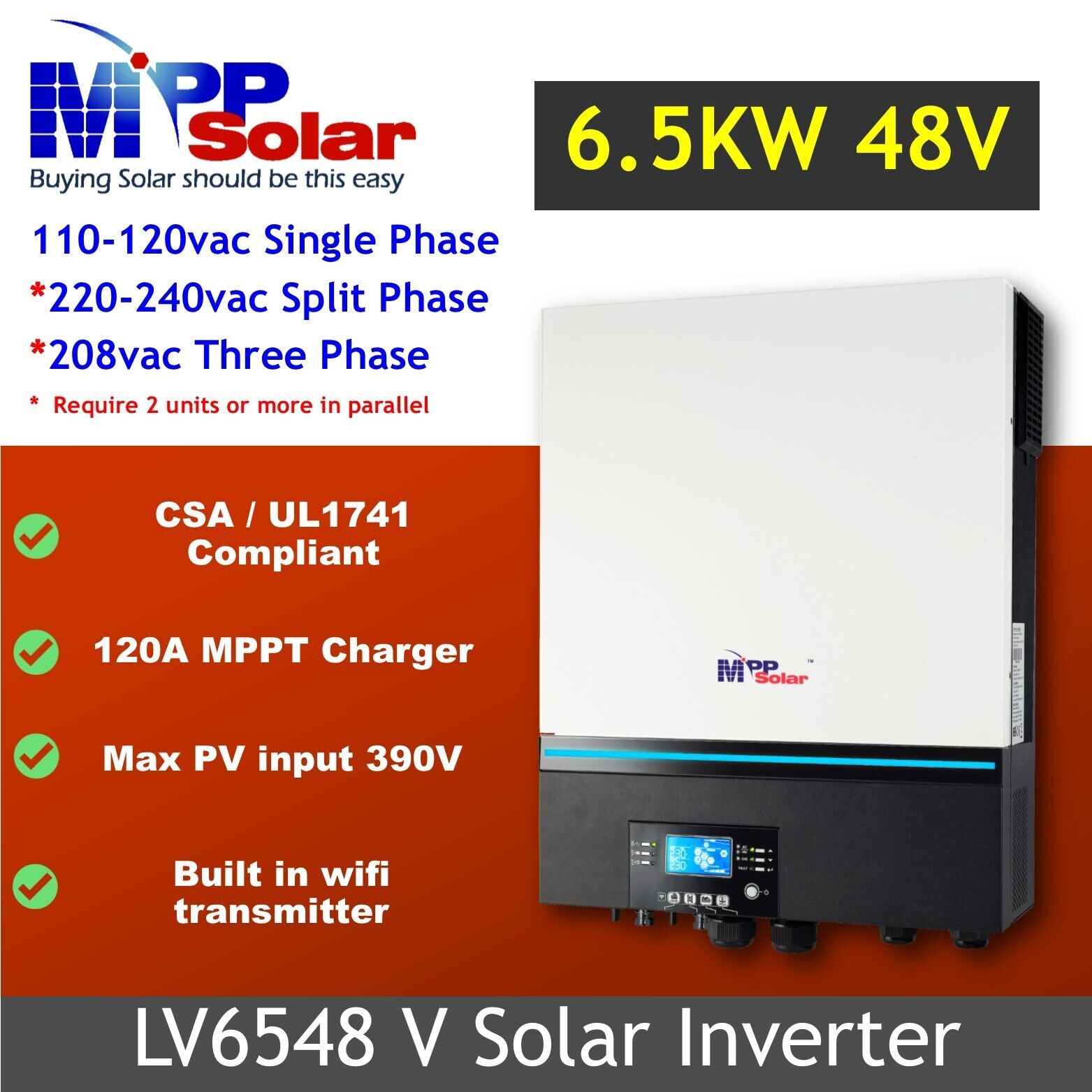

When selecting a solar inverter for your residence, there are several elements to weigh. Initially, determine if you require a Pure Sine Wave (PSW) inverter or a hybrid model. Additionally, contemplate the amount of power you need and the duration required to produce this power. A small-scale unit is also an option that can be installed on a wall.
Blocking diode
Blocking diodes are electronic components that are used to provide a path for the current from a solar panel to the battery. They also help to protect the battery in case of a short circuit.
Blocking diodes are commonly found on sailboats with two or more solar panels. They can be fitted into standard fuse holders and are rated to carry five amps.
In a basic photovoltaic system, there are four main parts. These include the solar cell, the solar panel, a charge controller, and the battery.
A solar cell generates electricity at clear skies. The amount of sunlight hitting the cell determines the current. The energy flow reverses when the panel is shaded. It is then used for charging the battery.
Solar cells can also be connected directly to the battery. However, this is not a good idea. This is because the current could back up through the cells, causing damage. An effective solution is to connect the panels to the battery and then use a charge controller to limit the voltage.
Blocking diodes are useful in certain situations, but they also have their downsides. For example, if you connect your panel to your battery, the energy that is generated will be lost if the battery is drained in the dark.
The amount of energy lost is usually less that tenths to milliwatts. If the sun is shining, it can cause significant yield drops. You should always use the diode correctly.
Blocking diodes are a great way to prevent damage to your solar modules and to make sure that all of the energy you collect is safely stored. There are other factors to consider.
Pure Sine Wave inverter
A Pure Sine Wave Inverter is a great option if you want to reduce your power bills. Inverters are able to convert DC electricity from solar panels into AC electricity, providing a more stable source of power.
Pure sine wave inverters can be expensive. It is a good idea that you shop around before purchasing one. You might find a cheaper model than you thought, but it won’t perform as well as you wanted it to.
You can check whether your devices can be powered by a power inverter to find out its performance. This can be done by plugging the device into a wall socket and switching off the power.
Non-pure sine waves can be irritating to many appliances, including televisions, computers, microwaves, and computers. These types of currents may cause problems with these devices, such as stuttering, weird printouts, and glitches. These devices will run smoothly if you choose a pure sine wave converter.
A pure sine wave converter is an essential part of any battery less solar power system, depending on what type of electronics you have. These devices can help you cut down on your electricity bills and keep your sensitive electronic equipment working.
A pure sine wave inverter is a great investment for most homes. Having one in place can also help you avoid a potential electrical fire.
Because of its efficiency, a pure sine wave inverter helps you save on your electric bill. There are a number of models available to choose from, including portable models, and heavy-duty inverters. Each model has its own advantages.
When choosing a Pure Sine Wave Inverter, the most important thing is to ensure that it produces enough power to run your devices. Also, you should get an inverter with plenty of output ports. Multiple output ports allow you to charge multiple devices simultaneously.
Hybrid systems
Hybrid systems offer a great solution for anyone who is looking to have both the flexibility of solar power and the security of having backup power in case of power outages. The key is having a battery storage system in place.
Compared to an off-grid system, hybrid systems are cheaper. They are also more powerful. A hybrid inverter might be worth the extra expense if you live in an area with frequent power outages.
A hybrid system provides power for the day and night, which is not possible with an off-grid system. This allows you to use it in adverse weather conditions and to keep your phone topped up during outages.
A battery can help you reduce your electric bills. Depending on your energy needs, you can store a certain amount of solar energy in your battery so that you can draw on it at a later time.
A hybrid system also has the advantage of being able to export any excess electricity to the grid. By doing so, you can reduce your energy costs and lock in low rates for years.
Hybrid systems are also less expensive than purely on-grid solar systems. It is a good idea to discuss your power needs with a professional installer before deciding which type of system is best for you.
Some hybrid inverters can be connected to a dedicated switchboard, which can supply essential circuits during blackouts. These types of inverters are more cost-effective than buying a separate battery unit.
Solar power monitoring software can help you to track your solar energy output and to identify problems with your system. You can access this information through a smartphone app that connects to your inverter.
Make sure to size the inverter correctly
When choosing an inverter, there are many factors to consider. First, calculate your power consumption. Then, check the inverter’s capacity. It should be capable of handling a typical load and a maximum peak load.
Typically, you want to choose an inverter that has a continuous power rating of at least 2250 watts. You will need to increase the capacity of your inverter if you plan to run more than one appliance simultaneously.
You can estimate your power needs by adding the wattage of all the devices you want to run. If you know the wattage of each device, you can also use the bare minimum figure. It’s a good idea, however, to increase the safety factor by at least 10-20%
There are many sizes and shapes of inverters. High-frequency switching type inverters are lighter and smaller. They are also cheaper in the lower power ranges.
When shopping for an inverter, make sure the battery is deep-cycle. This is important because it must be recharged when the power is used. A deep-cycle battery can be recharged by a gas generator, solar panels or an automobile motor.
Before purchasing an inverter, measure the power requirements for each device that you plan to plug into it. This will help you choose the right size. Don’t oversize the inverter or it will overload.
Inverters can also have cooling fans built in to prolong the battery’s life. It is a good idea that the inverter is located somewhere cool and dry. Using an inverter at the bottom of a home or garage is not usually a good idea, as it can heat up too quickly.
Delivery time
It is a good question to ask: How long does it take for your battery-less solar inverter from the manufacturer to reach your home? This is not an easy question to answer because there are many factors that play into it. These include the state of the economy, local zoning laws, and the quality of the component parts. Asking for a free estimate is the best way to approach your question. Rolls Battery Engineering (RTBE), can help you with this department. As a matter of fact, the company is so well versed in the industry, they even have a special program to help customers integrate their new purchase. No matter if you’re a beginner or a professional, don’t hesitate to contact the pros for a free quote.
In particular, you should take note of the company’s “M” or “M2” acronym as you are sure to receive a thorough and honest response. If you live in an area that has good old USPS, you might be surprised to find out that the Standard Delivery rates of the company apply to your product. RTBE also has an impressive system integration program that can save you a bundle on your next order.
The company’s technical staff has also discovered some of the more obscure secrets in the industry. They have created an online forum for solar enthusiasts and manufacturers to discuss topics such as the next-generation battery optimiser and its impressive range of recyclable inverter materials. RTBE also has a large stockpile of the most innovative components, so your project will be a step ahead of the rest.
Hi, I’m Emma. I’m the Editor in Chief of Tiny House 43, a blog all about tiny houses. While tree houses are often associated with childhood, they can be the perfect adult retreat. They offer a cozy space to relax and unwind, surrounded by nature. And since they’re typically built on stilts or raised platforms, they offer stunning views that traditional homes simply can’t match. If you’re looking for a unique and romantic getaway, a tree house tiny house might just be the perfect option.
Solar Panel Installation and Maintenance
Why Should Solar Panels Be Washed?

Several factors necessitate the cleaning of your solar panels. In regions with high rainfall, employing a pressure washer to clean your panels could be beneficial. Alternatively, using a garden hose is another effective way to clean your panels. Regardless of the cleaning method you choose, ensuring that the panels are thoroughly dry before storage is crucial.
Cleaning solar panels
Cleaning solar panels is a necessary part of solar panel maintenance. Experts recommend that solar panels be cleaned at least six times per year. You may not need to clean your solar panel as often if it is located in a dry area. Rainwater contains impurities that leave a film on the panel’s glass. In snowy areas, snow can also accumulate on the panels. Cleaning frequency also depends on panel placement. Panels that face pollen-producing trees should be cleaned more frequently than those upwind. To clean your panels properly, inspect them every week and remove any debris.
Solar panels don’t need to be cleaned often. Rainwater will remove most of the debris but not bird droppings. This can significantly reduce the output of your solar panels. It is a great way for you to protect your investment and maximize your tariff. Cleaning your solar panels will also help your panels run more efficiently.
To clean solar panels properly, you need to use soft materials such as a soft cloth or a chamois. Using soft materials helps avoid scratching the panels. Use a mild soap and water. After washing them, rinse them well and let them dry in the sunlight. The panels may get quite hot if they are left out in the sun for an extended period of time, so try to plan your cleaning sessions early in the morning or late in the evening.
For a more detailed cleaning, you can hire a service. Professional cleaners can clean the panels with waterless vibrations or robots. Other methods include basic cleaning instruments like brushes and water.
Cleaning solar panels with a garden hose
Using a garden hose to clean solar panels can be effective in removing dirt and debris that has accumulated on them over time. Simply stand in a safe area and spray the panels using soapy water. Rinse thoroughly. You can even use a soft brush to target problem areas. Just remember to clean gently and not aggressively, as the excess water may scratch the panels.
You may use a garden hose to clean your solar panels, but do not use a high-pressure hose insert because this can scratch the glass surface of the panels. This could affect the panels’ efficiency and void their warranties. You can avoid scratching the panels’ glass surface with a regular gardenhose equipped with a spraynozzle. You may also use a telescopic hose wand, which will allow you to reach the top of the panels easily.
Solar panels should be cleaned in the morning and at night. Because the water evaporates quickly during midday, it is best to avoid cleaning solar panels. This will reduce their efficiency. The panels may also crack if they are not watered during the day.
To properly clean solar panels, you should use a mild cleaning solution that is non-toxic. Avoid harsh chemicals and use soft-bristle brush. Use mild soap and water. Use a soft-bristle toothbrush to gently remove any dirt or debris. After the panels are cleaned, dry them in the sun. It’s important to note that solar panels can get quite hot during the summer, so try to clean them early in the morning or late in the evening.
Cleaning solar panels with a garden hose should not be an arduous task, but you should be prepared to invest in some special cleaning tools to prevent the panels from becoming damaged. A soft sponge or brush, deionized or distilled water, and special solar panel cleaning liquid soap are essential for a clean and safe solar panel. When cleaning solar panels, you should also make sure that you’re standing on a stable platform and have someone with you at all times.
Cleaning solar panels with a pressure washer
While high-pressure water sprayers can be useful, they can also damage solar panels. For small installations, a simple manual approach is the best. For best results, use a hose and bucket of soapy water. Apply the soap with a non-abrasive sponge, and rinse with clean water. Solar panels can be damaged by high-pressure water, so do not use a pressure washer.
Make sure you read the instructions on how to clean your solar panels before cleaning them. Cleaning the panels will decrease their output by about 5%, but you can get them back to normal power output after the next rain. Pick a sunny day and avoid rain to clean the panels. If you do end up cleaning the panels, take extra precautions to avoid burns. Moreover, remember that the water that you spray onto the panels evaporates quickly and leaves residue behind, reducing their efficiency.
The first step in cleaning solar panels with a pressure washer is to make sure that there are no stains or debris on the panels. Make sure not to mix the cleaner with any other materials. Also, make sure to start from the top of the panels and use a wide brush to clean them. To prevent them from getting wet, you can place plastic boards on the panels.
If you are unable to reach the panels, you might consider hiring a professional to clean them for you. A professional will have the proper experience and know how to use a pressure washer safely. Professionals will ensure you get the best results and minimize your risk of injury.
Solar panels can be cleaned with rainwater
Cleaning solar panels with rain is not an ideal solution for a solar energy system. Rain may not be enough to remove all the dust and other pollutants. Rainwater can mix with contaminants on panels, causing energy losses. According to a study in Spain, a long dry spell can result in up to 20% energy loss. In addition, the efficiency of a solar energy system will decrease as the dry spell lengthens.
To clean solar panels with rain, it is best to pitch them slightly. The pitch must be approximately five degrees to get a thorough cleaning. Experts recommend cleaning solar panels every three weeks during the dry season. Rain will wash off the loose dirt, but will not remove the baked-in dirt. Moreover, a clean solar panel will look dingier after the rain than it did before.
Solar panels can also be less efficient in the hottest parts of the day. Thus, it is best to clean them in the morning. Moreover, do not use hot water while cleaning solar panels because it can cause the glass to crack. It is better to use low temperatures water for cleaning solar panels. This will decrease the time and water required to clean.
You don’t have to hire a professional cleaner if you don’t want to. You can clean your solar panels yourself using the materials you already have at home. To clean your solar panels, you can use clean water, mild soap, and a soft brush. For best results, you should use water that is free of any detergent. If you are cleaning large areas of the panels, you may only need to use detergent. However, it is best to use a mild detergent to avoid any damage to the panels.
Solar panels can be cleaned in the rain
Although some people believe rain is bad, it can actually clean solar panels. In fact, a recent University of San Diego study shows that even short rain showers can help solar panels become free of dust and grime. Energy production can be affected by dirt and grime. Additionally, panels can be cleaned with rain to save money on utility bills.
It is a great idea to clean solar panels in the rain, but it is important to shut off the power before you start. The rain will help wash away dirt particles and prevent them from settling into the corners. Rain may not completely remove bird droppings. You can wash the dirt off with a garden hose if the rain stops. However, you should not direct water in the space between the roof and panels.
In addition to using a bucket of soapy water, you should also use a telescopic hose wand for a more secure grip. To clean trouble areas, you can also use a soft toothbrush. However, be sure not to scrub too hard, as this can scratch the solar panels.
You should also try to clean the solar panels during a cool day to minimize the risk of soapy residue. This is because cold water can cause cracks on hot glass. The efficiency of solar panels can be affected by smears or residue. Always remember to use warm water and dish soap when cleaning your solar panels. Make sure not to touch the panels’ wiring underneath, as this can lead to premature failure.
The rain can also wash away dirt and dust from solar panels. Even a tiny amount of dirt can affect efficiency by as much as 5%. This is $20 worth of wasted energy.
Hi, I’m Emma. I’m the Editor in Chief of Tiny House 43, a blog all about tiny houses. While tree houses are often associated with childhood, they can be the perfect adult retreat. They offer a cozy space to relax and unwind, surrounded by nature. And since they’re typically built on stilts or raised platforms, they offer stunning views that traditional homes simply can’t match. If you’re looking for a unique and romantic getaway, a tree house tiny house might just be the perfect option.
Solar Panel Installation and Maintenance
Should Solar Panels Be in Series Or Parallel?

Solar panels are usually linked either in a series or parallel configuration. In a series connection, the positive terminal of one panel links to the positive terminal of the following panel. On the other hand, in a parallel connection, the negative terminal of one panel links to the negative terminal of the subsequent panel. When panels are connected in parallel, they all share the same maximum power point current (known as IM1). In contrast, when connected in series, the sum of the individual module currents equals IM1 + IM2. As you add more modules in parallel, the total current rises. Furthermore, the short-circuit current (Isc) remains consistent regardless of the configuration used.

Adding solar panels in series
You should know how to connect solar panels to your home before you install them. Solar panels can be connected in series or parallel. Parallel connections connect the panels’ positive and negative terminals. If two panels are connected in series the positive lead from one panel will reach its opposite panel’s negative lead. This arrangement will not require additional MC4 connectors. In contrast, when two solar panels are connected in parallel, you will need a pair of MC4 connectors.
It is cost-effective and offers other benefits. This allows for shorter wire runs and lower installation costs. It also helps prevent voltage fluctuations and drops. Furthermore, by wiring solar panels in series, you can connect them to an inverter with little power loss.
When installing solar panels in series, it’s essential to make sure that they are all of the same brand and wattage. If you are on a tight budget, purchasing mismatched panels could cause problems. However, if you have an existing setup, adding mismatched panels is also possible. However, determining the correct configuration isn’t always as easy as it seems. There are some calculations you can use to determine the best configuration for your home.
One key difference between parallel and series wiring is that when solar panels are connected in series, the lowest-rated panel in the series is the weakest. This reduces the overall power of the solar array by almost 40 percent.
Parallel addition of solar panels
For households with high power requirements, it is smart to add solar panels in parallel. This ensures that you get the highest quality and amperage of your electric power. This is especially important if you have a large roof or a well-designed wiring system. You will also not experience power outages if one panel fails.
Make sure you connect multiple solar panels at once. This will ensure that they produce the same amount electricity and that the voltage is the same. You can produce up to 108 Watts by using solar panels in parallel. The total output current is dependent on the sum of each individual panel. When planning your system, you should consider the total number of panels.
One disadvantage of connecting solar panels in parallel is that parallel wiring requires heavier wires. These wires can handle higher currents but are more difficult to connect to an inverter. However, if one panel fails to work, the system can continue generating power by adding additional panels in parallel.
One of the biggest benefits of adding solar panels in parallel is that the total wiring will be less expensive. In addition, the PV components in a series can be located far apart from each other. Because each panel is connected in series, shading on one panel can reduce the total current of the entire series.
One disadvantage of adding solar panels in parallel is that the total output voltage of the array will be lower than the output voltage of the individual panels. This is because the lowest voltage panel will drag down the overall output power of the solar panels in the system. This will result in a lower output voltage, which will cause more power loss to the whole system.
Parallel solar panels have many benefits
Adding solar panels in parallel allows you to increase the amount of energy generated by a single solar panel. This is especially beneficial for homes with high power needs. The reason why adding solar panels in parallel is better than connecting them in series is that each solar module is its own independent circuit. This means that if one panel is damaged, the others will still function properly.
You can add solar panels in parallel to allow you to place them close enough so that the positive leads of one panel reach the negative leads of the next panel. Adding solar panels in parallel also means that you won’t have to use extra MC4 connectors if they’re arranged in series.
Parallel solar panels can also be a cost-saving option. You can use smaller wires and save on wiring costs. The length of each wire when connecting solar panels in series is equal to their total amperage. This ensures that you don’t lose too many electricity when running wires between solar panel.
Additionally, series-wired solar panels have one path for current flow. Each cell has its own voltage and current, so when you connect them in parallel, the lowest current solar panel will determine the total current. This reduces the total wattage by up to 40%
However, there are some limitations when it comes to adding solar panels in parallel. First, you must make sure that each solar panel is of the same brand and wattage. Panels from different manufacturers will result in higher electrical losses and lower output power. You should also choose panels with similar voltage ratings and current ratings.
Calculating the power output of solar panels in parallel vs. series
If you’re thinking about converting your solar panel system from parallel to series, you’re probably wondering how the two different configurations affect power output. To compare the systems, you will need to determine the total number of panels. Solar panels connected in series will produce less energy than those connected in parallel. If you’re considering adding solar panels to an existing system, make sure they are the same brand and wattage. However, the process is not as straightforward as it may seem.
You will need to multiply the voltage of each series of solar panels by the amperage. This will calculate the power output of each series. The maximum power point current (IM) of each module will equal the maximum power point current (IM) of the next module. This means that the total current of solar panels connected in parallel will be equal to IM1 + IM2. This formula keeps repeating as you add more modules in parallel. This is also true of short-circuit current (Isc).
Putting solar panels in parallel will lower the total output power by reducing the voltage, but it is still preferable. It is important to note that when you connect solar panels in parallel, it is better to choose the same voltage value for the panels. This will reduce the panels’ power output by approximately 17%. However, parallel is better than serial for panels with similar characteristics.
The best way to wire solar panels in parallel is to ensure that they are not too far apart. This is not recommended for systems that have long wires. Moreover, higher voltages require thicker wires, which is not only more expensive but also risks security concerns. As a result, you should always avoid touching the live wires. Also, when working with solar panels, it’s recommended to turn them off when not in use.
Solar panels added in series vs. parallel
When wiring solar panels, you will need to determine if the panels should be connected in series or parallel. In general, adding solar panels in series allows you to use smaller wires. This will save on installation costs. It will also allow you to wire solar panels together for longer distances without losing electricity.
A solar panel array can be connected in series or parallel depending on the voltage and current of each panel. A solar panel that is in series will produce more current than one that is connected in parallel. It will still produce less power. It is important that you note that solar panels connected in series are safer than those connected in parallel.
Parallel wiring involves connecting the positive terminal of one module to the negative terminal of another. In this way, the maximum power point current of one module is equal to the maximum power point current of the second module. When connected in parallel, the total current of the modules is IM1 + IM2, and continues to increase as the modules are added together.
While solar panels are not rated for parallel wiring, they can be connected in series when close enough to each other. If one panel is shaded, the other panels can continue to produce full power without interruption. Parallel wiring is more convenient for off-grid solar system because it allows for greater flexibility.
The electrical configuration of solar panels should be considered carefully before wiring. Depending on the voltage and amperage desired, solar panels can be wired in series or parallel. You need to consider the inverter’s maximum voltage and amperage limits when selecting wiring.
Hi, I’m Emma. I’m the Editor in Chief of Tiny House 43, a blog all about tiny houses. While tree houses are often associated with childhood, they can be the perfect adult retreat. They offer a cozy space to relax and unwind, surrounded by nature. And since they’re typically built on stilts or raised platforms, they offer stunning views that traditional homes simply can’t match. If you’re looking for a unique and romantic getaway, a tree house tiny house might just be the perfect option.
-

 Beginners Guides2 months ago
Beginners Guides2 months agoHow To Buy A Tesla Tiny House
-

 Energy Efficiency3 weeks ago
Energy Efficiency3 weeks agoBest Tiny Homes For Cold Climates
-

 Beginners Guides2 months ago
Beginners Guides2 months agoTiny House Nation Where Are They Now Stephanie
-

 Tiny House Resources (e.g., legalities, cost, insurance, FAQs)1 month ago
Tiny House Resources (e.g., legalities, cost, insurance, FAQs)1 month agoDo Tiny Homes Need Planning Permission?
-

 Beginners Guides2 months ago
Beginners Guides2 months agoFrom The Show Tiny House Nation How Many Keep Their Tiny House?
-

 Beginners Guides1 month ago
Beginners Guides1 month agoUsing a Climbing Net For Treehouse Construction
-

 Beginners Guides1 month ago
Beginners Guides1 month agoHow to Build a Treehouse Without Drilling Into the Tree
-
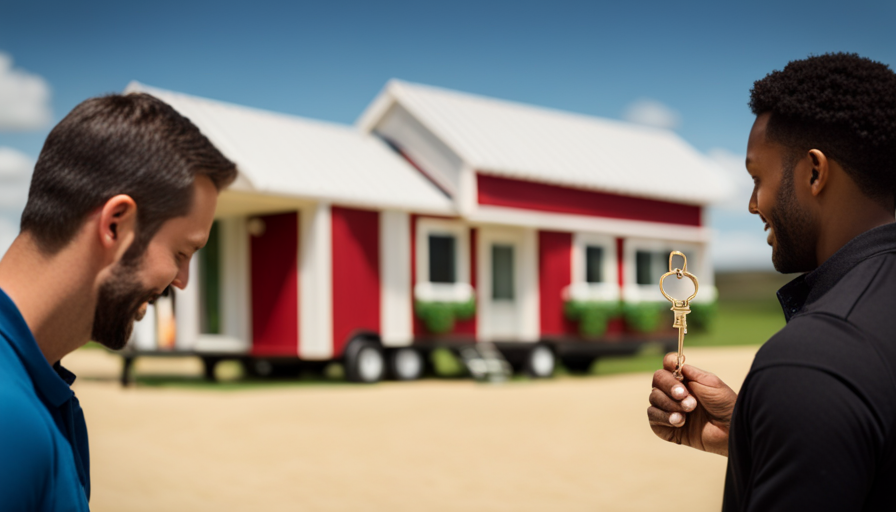
 Beginners Guides3 months ago
Beginners Guides3 months agoTiny House Nation Who Pays For The Houses




